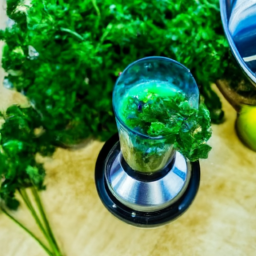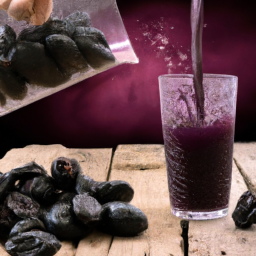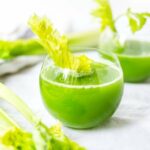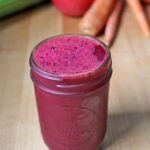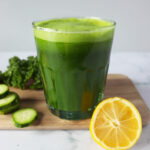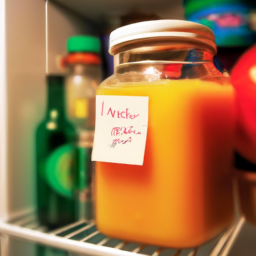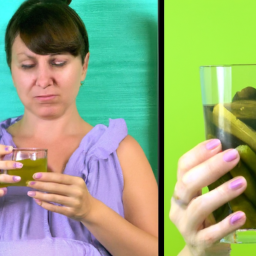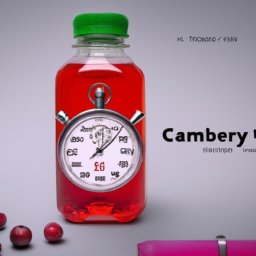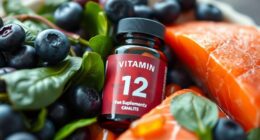Parsley juice is a fantastic elixir that helps promote a healthier and more toned body. It is packed with essential vitamins and minerals that can boost your immune system, improve digestion, and detoxify your body. Drinking parsley juice is also a great way to keep your skin glowing and youthful.
Making parsley juice is easy and can be done in the comfort of your own home. All you need are fresh parsley leaves, a juicer, and some fruits and vegetables to mix with the parsley.
In this article, I will guide you through the process of making parsley juice, from choosing the right parsley to storing your juice.
So, grab your juicer and let’s get started on this journey to a healthier you!
Key Takeaways
- Choose fresh, bright green parsley leaves and wash thoroughly before juicing.
- Italian flat-leaf parsley has a higher concentration of essential oils, making it a good choice for juicing.
- Mixing parsley juice with other fruits and vegetables is recommended to enhance the flavor and nutritional benefits.
- Aim for 1-2 cups of parsley juice per day, while being cautious not to exceed 2-3 ounces per day to avoid adverse effects, especially for those with kidney problems.
Benefits of Drinking Parsley Juice
You’ll be amazed at the benefits you’ll experience from drinking parsley juice regularly! The health benefits of parsley juice are numerous and impressive. Not only is it an excellent source of vitamins C, K, and A, but it’s also loaded with antioxidants and anti-inflammatory compounds that can help improve your overall health.
The nutritional value of parsley juice is noteworthy. It contains important minerals such as iron, calcium, and magnesium, which are essential for maintaining healthy bones and teeth. Additionally, parsley juice has been shown to help lower blood pressure, reduce the risk of heart disease, and improve digestion.
Overall, adding parsley juice to your daily routine can provide significant health benefits. Now, let’s talk about choosing the right parsley for your juice.
Choosing the Right Parsley
Before heading to the grocery store, it’s important to know which type of parsley will work best for your needs. Picking fresh parsley is crucial to ensure that you get the most nutrients and flavors from the herb.
When selecting parsley, look for bright green leaves that aren’t wilted or yellowing. There are two common parsley varieties: curly parsley and Italian flat-leaf parsley. Curly parsley has a milder flavor and is often used as a garnish, while Italian flat-leaf parsley has a stronger flavor and is great for cooking.
Italian flat-leaf parsley has a higher concentration of essential oils, making it a better choice for making parsley juice. Lastly, it’s important to note that you can also grow your own parsley at home and enjoy the benefits of freshly picked herbs.
When it comes to preparing the ingredients, you’ll need to wash the parsley thoroughly and remove any stems before juicing.
Preparing the Ingredients
To properly prepare your ingredients, start by thoroughly washing the parsley and removing any stems, ensuring that only the leaves are used for the juice. I recommend using a gentle washing technique to avoid damaging the parsley.
Fill a large bowl with cool water and immerse the parsley, swishing it around gently. This will help remove any dirt or debris that may be on the leaves. Once you have washed the parsley, use a salad spinner or paper towels to dry it.
Next, it’s important to use proper knife skills to prepare the parsley. Lay a handful of parsley leaves flat on a cutting board and use a sharp knife to chop them finely. You can also use a food processor to chop the parsley, but be careful not to over-process it as this can result in a bitter taste.
Once the parsley is finely chopped, it’s ready to be used for extracting the juice.
Now that we have prepared the parsley, it’s time to move onto extracting the juice.
Extracting the Juice
Now that the parsley’s ready, I need to extract the juice. There are three methods I can use: a juicer, a blender, or straining the juice manually.
Using a juicer will give me the most yield, but a blender can also be used if I add a bit of water to help with the blending process.
If I choose to strain the juice manually, I’ll need to use a fine mesh strainer or cheesecloth to remove any solids.
Using a Juicer
Using a juicer is the easiest and most efficient way to extract the maximum amount of juice from parsley. It can extract up to 90% of juice from the leaves and ensures that the juice is free from any impurities or pulp. To start, it’s important to ensure that the juicer is well-maintained to prevent any contamination or damage to the parsley leaves. This can be done by cleaning the juicer after each use and ensuring that all parts are properly assembled before juicing.
When juicing parsley, it’s important to use the right juicing technique to extract maximum juice. This involves feeding the parsley leaves into the juicer one at a time to ensure that they are properly shredded and squeezed. It’s also important to use the appropriate setting on the juicer to prevent the machine from overheating.
Once the parsley has been juiced, the resulting juice can be collected in a container and stored in a refrigerator for later use. However, if you prefer a smoother consistency, the next section will cover how to use a blender to make parsley juice.
Using a Blender
Blenders can be a great alternative for those who don’t have access to a juicer or prefer a smoother consistency in their parsley drink. However, it’s important to keep in mind that using a blender may change the taste and texture of the juice.
Here are some tips to help you make the most of your blender usage when making parsley juice:
- Use a high-speed blender: Blenders with high-speed settings are better at breaking down the tough fibers in parsley, resulting in a smoother drink.
- Add water: To help the blender run more smoothly, add water to the parsley before blending. This will also dilute the taste of the parsley, making it more palatable for those who may not enjoy the strong flavor.
When using a blender, it’s important to consider your taste preferences. While a juicer extracts only the juice from the parsley, a blender blends everything together, including the fibers and pulp. This can result in a thicker drink with a stronger taste. If you prefer a smoother, less pulpy juice, you may want to strain the blended parsley before drinking it.
Straining the Juice
To get a smoother and silkier consistency, it’s essential to strain the blended mixture through a fine mesh sieve or cheesecloth, leaving behind any remaining pulp and fibers that might ruin the perfect sip. Alternatively, you can also use a juicer to extract the juice directly from the parsley leaves and stems, which also eliminates the need for straining.
Straining the juice not only enhances its texture but also ensures that you get the maximum health benefits of parsley juice. By removing the pulp and fibers, you can increase the absorption of these nutrients and prevent any digestive discomfort.
Now that we have a silky smooth parsley juice, let’s explore how we can mix it with other fruits and vegetables to create delicious and nutritious blends. Parsley is loaded with antioxidants, vitamins, and minerals that can boost your immune system, improve digestion, and reduce inflammation.
Mixing with other Fruits and Vegetables
Get creative with your parsley juice by combining it with other fruits and veggies for a delicious and nutritious blend! One great way to enjoy parsley juice is to mix it with other fruits like apple, pear, or pineapple. The sweetness of these fruits complements the slightly bitter taste of parsley, creating a well-balanced flavor profile.
You can also add some veggies like cucumber, celery, or spinach to your parsley juice for an extra boost of nutrients and a refreshing taste. When choosing fruit combinations or vegetable pairings for your parsley juice, it’s important to consider the nutritional value of each ingredient and how they complement each other in terms of taste.
For example, apples are a great source of antioxidants and fiber, while pineapples are rich in vitamin C and bromelain, an enzyme that aids in digestion. Meanwhile, cucumber and celery provide a cooling effect and are low in calories, making them great additions to your parsley juice.
Now that you have your delicious parsley juice blend, it’s important to store it properly to keep it fresh and nutritious. Let’s move on to the next section where we’ll discuss the best ways to store your parsley juice.
Storing Parsley Juice
Once you’ve created your refreshing and nutritious parsley blend, it’s crucial to store it properly so that it stays as fresh as a spring morning. Storing parsley juice can be done in a variety of ways, depending on how long you want it to last and how much space you have.
The shelf life of parsley juice can vary from a few hours to a few days, depending on whether you refrigerate it or not. For the best results, it’s recommended to drink parsley juice as soon as possible after making it.
If you need to preserve the freshness of your parsley juice for a longer period, there are a few storage methods that you can try. The best way to keep parsley juice fresh is to store it in an airtight container in the refrigerator. Glass jars or bottles work well, as long as they have tight-fitting lids. It’s also important to keep the juice away from light and heat, as this can cause it to spoil more quickly.
By storing your parsley juice properly, you can enjoy all the health benefits of this detoxifying and nutrient-rich drink for days to come.
When it comes to serving suggestions, there are many ways to enjoy parsley juice.
Serving Suggestions
When it comes to serving parsley juice, I often wonder how much parsley I should use. Based on my research, a good ratio is about one cup of chopped parsley to one cup of water. However, this can vary depending on personal taste and desired potency.
Additionally, I have heard conflicting opinions on whether it’s safe to drink parsley juice every day. I plan to delve deeper into this topic and gather more evidence before making a decision on incorporating parsley juice into my daily routine.
How much parsley should I use?
For a refreshing and healthy parsley juice, you’ll want to use about a handful of parsley leaves. Besides being a flavorful herb, parsley is also rich in nutrients such as vitamin C, vitamin K, and folate. In fact, just one cup of fresh parsley provides more than 100% of the daily recommended intake of vitamin C.
If you are new to drinking parsley juice, it’s recommended to start with a smaller amount and gradually increase the dosage. Too much parsley can have adverse effects, especially for those with kidney problems. As a general guideline, aim to use around 1-2 cups of parsley per day in your juice. This amount can be split into several servings throughout the day or consumed all at once. Ultimately, it’s important to listen to your body and adjust the amount of parsley accordingly.
Can’t I drink parsley juice every day? Yes, but moderation is key. While parsley has numerous health benefits, consuming large amounts can lead to side effects such as upset stomach, diarrhea, and kidney damage. It’s best to consult with a healthcare professional before making any changes to your diet, especially if you have underlying medical conditions.
Can I drink parsley juice every day?
Yes, I believe you can drink parsley juice every day and gain several health benefits. Parsley is an excellent source of vitamin C, vitamin K, and other important nutrients that can boost your immune system, aid in digestion, and promote healthy skin and hair. However, it’s important to note that overconsumption of parsley juice can have adverse effects, especially if you have kidney problems or are taking certain medications.
To ensure that you’re getting the most out of your parsley juice, it’s recommended that you consume no more than 2-3 ounces per day. This amount is sufficient to provide you with the necessary nutrients without causing any harm to your body. It’s also crucial to consult with a healthcare professional before adding parsley juice to your daily routine, particularly if you have any underlying medical conditions.
Now that you know the recommended intake of parsley juice, let’s move on to some tips for making the best parsley juice.
Tips for Making the Best Parsley Juice
To make the best parsley juice, you’ve got to use fresh and vibrant parsley leaves. This means that you should buy parsley that is bright green and crisp. Avoid wilted or yellowing parsley as it may not have the same flavor and nutritional value. Once you have your parsley, it’s important to wash it thoroughly to remove any dirt or debris.
When it comes to juicing techniques, there are a few tips that can help you get the most out of your parsley. First, make sure that your juicer is clean and in good working order. Then, feed small bunches of parsley through the juicer slowly to avoid clogging the machine. You can also mix parsley with other fruits and vegetables to create delicious flavor combinations. Here are a few examples:
| Parsley + Apple | Parsley + Pineapple | Parsley + Cucumber |
|---|---|---|
| 2 green apples | 1/2 pineapple | 2 cucumbers |
| 1 bunch parsley | 1 bunch parsley | 1 bunch parsley |
| 1/2 lemon | 1/2 lemon | 1/2 lemon |
| 1 inch ginger | 1 inch ginger | 1 inch ginger |
Experiment with different combinations to find your favorite flavor profile. Remember, the key to making the best parsley juice is to use fresh, high-quality ingredients and to take your time when juicing. Happy juicing!
Frequently Asked Questions
How does parsley juice affect the body’s pH balance?
I was curious about the effect of parsley juice on body pH levels, especially in relation to the alkaline diet. Research suggests that parsley contains alkalizing minerals, which may help balance acidity levels in the body.
Can parsley juice help prevent or treat certain medical conditions?
Parsley juice may prevent or treat certain medical conditions. Research evidence suggests benefits for reducing inflammation, improving digestion, and supporting antioxidant activity. However, there are also controversies and potential drawbacks, such as interactions with medications.
Is it safe to consume parsley juice every day?
Consuming parsley juice every day can have multiple benefits such as reducing inflammation and improving digestion. However, it’s important to consult with a healthcare professional before incorporating it into your daily routine. Check out different parsley juice recipes online.
What are some common side effects of drinking parsley juice?
Common side effects of consuming parsley juice include gastrointestinal distress, such as nausea and diarrhea, as well as allergic reactions. Despite potential risks, the juice benefits include anti-inflammatory properties and rich sources of vitamins and minerals. Careful preparation tips should be followed to reduce risk.
How long should I wait after drinking parsley juice before consuming other foods or beverages?
After drinking parsley juice, it is best to wait at least 30 minutes before consuming other foods or beverages. This allows for proper digestion and absorption of the nutrients in the juice by the digestive enzymes.
Conclusion
In conclusion, making parsley juice is a simple and nutritious way to improve your overall health and wellbeing. With its high levels of vitamins, minerals, and antioxidants, parsley juice can help boost your immune system, improve digestion, and even promote healthy skin and hair.
Did you know that 100 grams of parsley contains more vitamin C than an orange? This fascinating statistic highlights just how powerful and beneficial parsley can be for our bodies.
By incorporating parsley juice into your daily routine, you can enjoy all of these amazing benefits and more. So why not give it a try and see how it can improve your health and vitality?
Remember to choose fresh, organic parsley, and experiment with different fruits and vegetables to find the perfect blend for your taste preferences. Happy juicing!
Ilana has been a vegan for over 10 years. She originally made the switch for health reasons, but soon found herself becoming more and more passionate about the ethical and environmental implications of a vegan lifestyle. Ilana is the author of The Graceful Kitchen, a blog all about veganism. She loves to cook up delicious and nutritious vegan meals, and share her recipes with others who are interested in leading a cruelty-free life. Ilana is also a strong advocate for using whole foods as the foundation of a healthy diet, and believes that going vegan is one of the best ways to achieve this.
